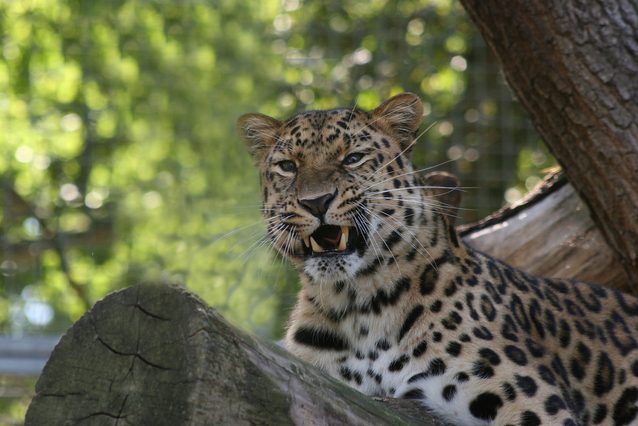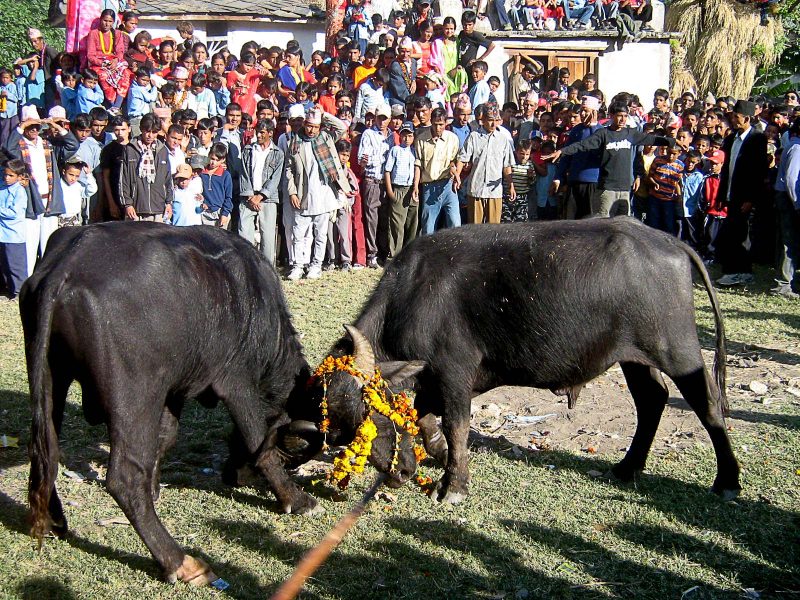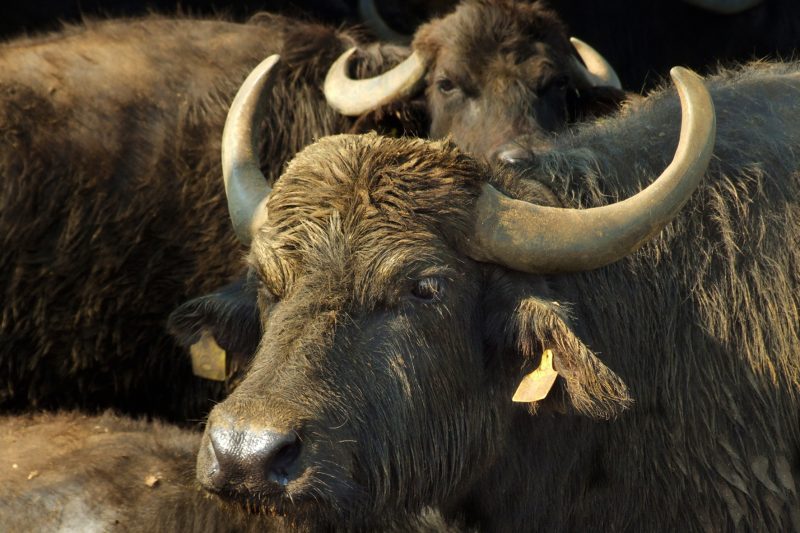Predators in the savannas of Kenya
Light colored leopard
Closely related to lions, jaguars and tigers are the dominant and graceful cats called leopards. Many of their populations are critically endangered. Leopards are light colored with dark spots that are called rosettes due to their resemblance to the shape of a rose. These spotted coats allow them to merge with the leaves of the trees that they hunt from until they leap with a deadly pounce. This feral cat is so active in trees that it often carries its kills into the branches. It hopes to save it from scavengers such as hyenas by dragging the carcasses of large animals aloft. The coat also blends in well in the savannas. Thus, these predators stalk antelopes, pigs and deer too by stealthy movements in the grass.
Leopards are also strong swimmers and are very comfortable in the water where they eat fish and crabs. Where humans settle, they attack dogs and occasionally human beings. Female leopards usually give birth to two grayish cubs with hardly any spots. The mother hides the litter and moves them from one safe place to the next until they are mature enough to begin learning to hunt. The young live with their mothers for two years. Otherwise, they are solitary animals.
Kenyan wild dog
Unlike other dogs, the long-legged wild dog has only four toes per foot. It is also called painted dog referring to its irregular, mottled coat featuring patches of red, brown, black, yellow and white fur. Each animal has its unique coat pattern and have rounded ears. They are also known as cape hunting dogs. These canines communicate by touch, vocalisations and actions. Wild dogs typically roam the sparse woodlands and open plains of Kenya. They live in groups and are social animals. Wild dogs hunt antelopes and other prey mainly if their quarry is injured or sick. They tackle them in cooperative packs who share food and assist weak or ill members. One breeding pair dominates each herd. The female has 2 to 20 pups who become the responsibility of the entire group.
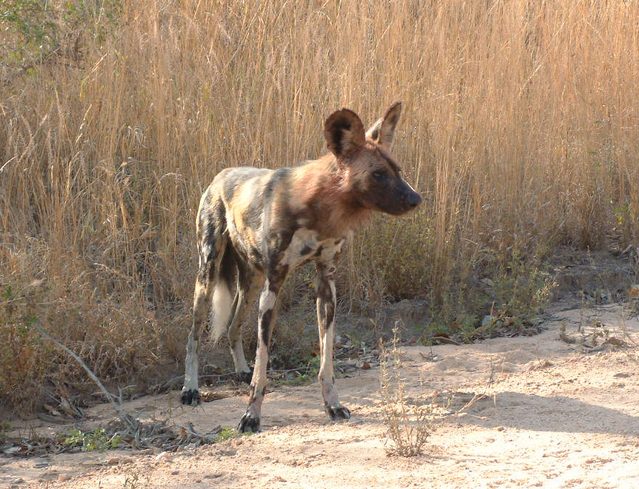
African wild dog
Wild dogs supplement their food with rodents and birds. They have also developed a taste for livestock, as human settlements expand. Unfortunately, because of this, farmers who fear for their domestic pets often hunt these animals. In the recent past, wild dogs are threatened by diminishing space to roam in their habitat. They are also susceptible to diseases spread by other animals.
Super smart hyena
Many tribes in Kenya leave their dead to be eaten by hyenas. Some human beings consume these animals too. Biologists have been observing them for some time and have discovered some strange behaviors. These fascinating creatures are not very well understood. Hyenas can be dangerous towards human beings. They will attack humans, especially if they are perceived to be sick, hurt or incapacitated. Hyenas are highly intelligent social animals who are known as scavengers, although they are formidable predators too. They frequently steal fresh kills from leopards, lions and cheetahs. Hyenas can weigh 190 pounds, and their bite can crush bones. Their intelligence and ability to hunt enable them to kill much more often than other animals.
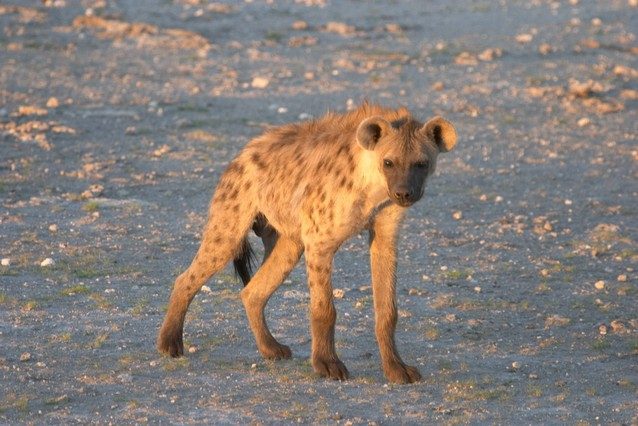
Hyena
Interestingly enough, though hyenas look dog-like, they are more closely associated with cats. Their closest relatives are genets and civets. Visual inspection of these animals makes it appear as if all of them are males, but they are not. A hyena tribe is made up of females. The dominant position of the matriarch is hereditary, whose pups within the clan will also be of high status.
Solitary serval cat
Typically found in Kenya, a serval is a cat with a lean body and gigantic ears and longest legs of any cat breed. The coat of a serval cat has shades of orange or tan with dark brown or black markings. The pattern helps it to disguise itself when hunting in grasslands. The serval is a solitary cat that can live for up to 20 years. Some people keep serval cats as pets, but they are limited in their numbers. Most servals are found at zoos or large cat rescues because it is not a domestic cat. It is a wild animal that has inherited instincts that needs nurturing in a distinct environment. There are also many risks surrounding its possession. Moreover, several countries have prohibited their ownership or require licenses to own one.
Night time genet
Active primarily after sunset, a genet is a short-legged animal with long tails, pointed nose, large ears, and retractile claws. Its coloration varies among species. However, it is usually pale grayish, marked with dark stripes and spots. The tail has white and black bands. Genets live in pairs or alone. They frequent grasslands, forests and bush and are as nimble in the trees as they are on the ground. They eat small mammals and birds.
Jackal
The jackal is a member of the dog family. There are four species of jackal. They are the golden jackal, the black-backed jackal, the side-striped jackal and the Ethiopian wild jackal. They have a wide range of sounds that are specific to each family, meaning that it is rare for families of strange jackals to come into contact with one another. Jackals live in the crevices of dens and rocks made by other animals so that they can keep cool while they sleep.
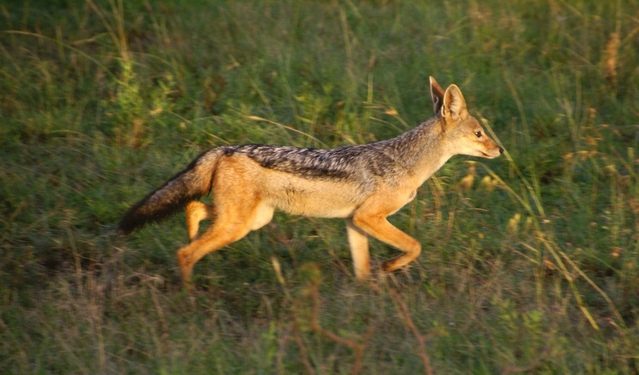
Jackals are territorial animals and have no hesitation in defending their area
The fierce members of the dog family are territorial animals and have no hesitation in defending their area. They live in packs of roughly 10 to 30 individuals. They use these large groups to work cooperatively to protect one another. But they prefer to hunt alone or in pairs. Jackals hunt small mammals, reptiles and birds. Some species of jackal eat poisonous snakes. They are carnivorous mammals and often scavenge the remains of kills. The jackal is a nocturnal animal. So, they tend to have a higher probability of ambushing their prey. Although the jackal is a carnivore many individuals eat plant matter when meat is scarce.
5 Frequently asked questions about the predators in the savannas of Kenya
To receive a colourful digibook about animals with videos, images and text, please fill out the following form or simply email us on safaris@safari-center.com

